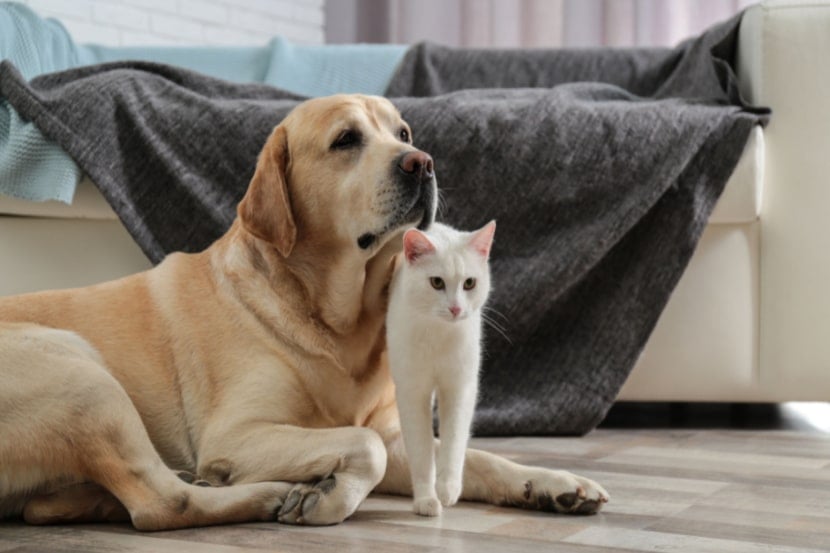You might need to change your pet insurance policy because your pet has been ill, or if you need to change your address. You can change your pet insurance policy at any time by contacting your insurer.
The same applies if you’re switching pet insurance companies. But you should be aware that some insurers don’t cover pre-existing conditions, so make sure you check this before you switch.
In this guide, we’ll look at how you make changes to your pet insurance policy. And what to do if your circumstances change, for example if your pet dies or goes missing.

How do I change my pet insurance policy?
To change your policy, contact your insurer. You may be able to do this by email but it often involves a phone call.
You might want to change your pet insurance policy if:
- Your pet has become unwell
- You want to increase the level of cover available
- You want to change your address or do another simple admin task
Your insurer can tell you if your insurance costs are likely to increase because of the change or if there's an admin fee to pay.
You can then continue and pay the extra charges if there are any, or you could switch to a different insurer. Just make sure you've read all the small print before switching pet insurance so you know what's included in the new policy.
Pet insurance policies are often flexible. They usually last for 12 months and at this point, you can choose to keep your policy or move to a different insurer.
You could save money by switching if you can find a policy offering the level of cover you need at a cheaper price.
But, unlike with other types of insurance, you may also see your price go up when you change pet insurance. That's because some insurers don't cover pre-existing conditions. Or you may have to pay more for them.
Pre-existing conditions
A pre-existing condition is an ongoing health condition. These include:
- Diabetes
- Joint or hip issues like hip dysplasia
- Allergies if they require ongoing medication
Usually conditions like these aren’t covered, even if they develop during the policy. But you can get cover for unexpected illnesses or injuries, like gastritis or an injury like a broken bone.
If you’re switching insurers you should keep this in mind. There are a handful of insurers that offer insurance for pre-existing conditions, but we don’t compare any that do at Confused.com.
Our guide pre-existing conditions can give you more information on this.
Can I change pet insurance mid-policy?
Yes, you should be able to change your pet insurance policy even if you're halfway through it.
In fact, it's important to do this as your insurer needs to be aware of any big changes to your circumstances or your pet's. For example, if your pet has been diagnosed with a new condition or you want to increase the level of cover.
There might be a charge, either increased insurance costs or an admin charge. But you should be told about these before you confirm any changes.
It's up to you whether you decide to accept the costs to make the changes or pay a cancellation fee and switch insurers.
But, when switching policies, it's important to remember that there may be a waiting period where you aren't covered. There could be a 14-day period where you can't make a pet insurance claim.
Before the new policy begins, you may want to continue paying for your existing plan to ensure you're still covered during an accident or illness.
Can I increase my pet insurance cover?
Yes, you can increase what your pet insurance covers. You can do this by contacting your insurer.
Increasing the level of cover your policy provides usually costs more. So it's important to compare the cost of the policy with the cover your insurer is offering.
You could, for example, just cover the basics such as if your pet has an accident. This is known as 'accident-only cover'. Or you could go for a lifetime pet insurance policy which provides much more cover.
Sometimes there are yearly limits on the amount an insurer can pay towards different conditions. You choose these when you buy the policy but over time you may want to change them if your pet requires more care.
Pet insurance is a competitive market so it's worth shopping around to compare policies to find one that offers the best value for money.
Can I change my pet insurance provider?
Yes you can change your pet insurance provider. You might want to do this if you’ve found a better deal for your pet insurance.
If you’re thinking of changing your pet insurer then you can call your existing insurer and let them know you’re switching.
How to cancel your pet insurance
You can cancel your pet insurance at any time, but there may be fees involved.
Cancelling a new policy
When you buy pet insurance, there's a 14-day cooling-off period. This means you can cancel in this window and there shouldn't be any fees, except for a potential admin cost.
Cancelling mid-policy
If you're out of the 14-day window you can still cancel, but your insurer might charge an early cancellation fee.
If this happens, your insurer should tell you what fees they're charging you, what they're for and how much they are. These should reflect the administration costs, such as if they need to recalculate your policy costs. Or if your policy needs to be rewritten.
If you think the fees are too high, you can challenge them. First, talk to your insurer. If it insists you pay the charges you can then complain to the free Financial Ombudsman.
Cancelling pet insurance before renewing
You can also cancel at the end of your policy just before it renews. If you decide not to renew, you need to contact your provider and tell them to end the policy. You can usually do this online or on the phone.
If you're unsure, contact your provider and ask them what the process is.
Cancelling your policy rather than letting it renew automatically shouldn't cost you anything. But you may not be covered until you buy a new policy. This could cost more, especially if your pet has pre-existing conditions.
It's best to compare pet insurance policies when you first get your renewal notice from your existing insurance company. This should give you plenty of time to shop around without jeopardising your cover.
Cancelling your pet insurance if your pet dies
If your pet dies, you could follow these steps:
- Ring your insurer and tell them
- If your insurer asks for it, get a certificate or statement from your vet confirming your pet’s death
- Check your policy for any specifics on what to do if your pet dies
- Cancel automatic payments once your insurer knows
- Ask about any refunds if you paid for your policy in one go
Losing a pet is hard. If you don’t know where to start, or if you’re struggling with any of these steps, ring your insurer’s customer service helpline. They can talk you through what you need to do.
When should I cancel my insurance if my pet has gone missing?
It’s up to you how long you wait to cancel your insurance after your pet has gone missing. But when you do decide, you can phone your insurer and cancel your policy.
Some pet insurers might pay you a percentage of what you paid for your pet. But you need to show them proof that you bought the pet, or proof of ownership.
If you have a dog, they have to have a microchip with up to date information on it to be eligible for this.
Check the small print of your policy to find out what you’re eligible for if your pet goes missing.
It’s worth noting that some policies cover the cost of missing pet posters which could help with the search for your missing pet.






